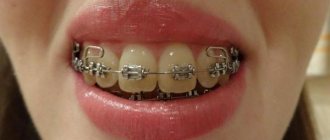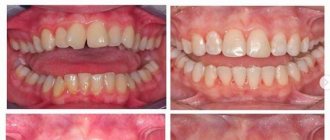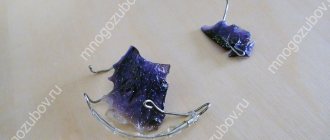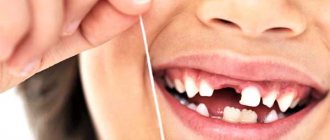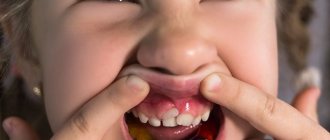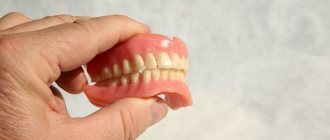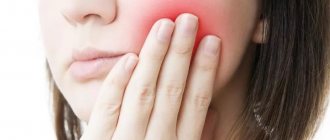In the process of dental treatment using a braces system, the patient encounters difficulties. First of all, the installation requires getting used to toothaches. There is a need to prescribe eating habits, and the patient’s speech also suffers.
All these are temporary difficulties and after some time they go away on their own. But there are situations that need to be corrected when they arise. Bracket coming off is a common situation, and you need to know exactly what to do in case of it.
Causes
Braces are considered a fragile structure, therefore, when using the product, the patient should follow certain rules and follow the recommendations of a specialist. This will maintain the integrity of the system throughout the entire treatment period.
The locks of the device are glued to a special adhesive. The adhesive has high strength values. It can withstand a certain pressure, but is destroyed when the force increases.
The power arc is deformed when the system is installed. She puts the main pressure on the locks, trying to return to their original state. With crowded teeth and some other malocclusions, uneven distribution of pressure occurs.
So, the fixation of the elements of an othodontic product can be impaired for several reasons. Among them:
- Consumption of inappropriate products. Doctors recommend excluding hard, tough and sticky foods from the diet.
- Inaccurate movements when performing hygienic procedures for caring for the oral cavity. You should use a toothbrush with soft bristles and use dental brushes carefully.
- Pathological arrangement of teeth. An acute lack of space creates significant pressure on the dentition. Conditions for element rejection arise even with the most minimal arc parameters.
The period of wearing braces ranges from one to three years. The duration of treatment depends on the age of the patient and the specific clinical case. The longer the correction, the higher the risk of structural failure.
Correct installation of braces is the responsibility of the orthodontist
In some patients, due to a significant lack of space on the jaw and high crowding of teeth, braces may come off just a couple of days after installation. In such cases, the professionalism and skill of the orthodontist are demonstrated, who must fix all the elements taking into account the characteristics of the patient. To ensure that ceramic braces and other types do not come off when the teeth are closed, they must be glued not in the center of the tooth, but with a certain offset. But at the same time, the doctor must also take measures to ensure that the system looks attractive and is comfortable to use for the patient.
In very rare cases, braces come off due to unprofessional actions of the dentist. For example, instead of using orthodontic adhesive that contains fluoride to block the development of caries under the braces and provide tensile strength to the bond, the doctor may use a filling compound. This material is designed to resist compression and cannot provide the proper quality of bonding between the bracket and the tooth.
What to do if your braces come off?
In such a situation, you should report the incident to the doctor who installed the orthodontic product as soon as possible. He will schedule an unscheduled appointment.
It is of great importance where the fallen lock is located. If it was fixed on one of the front teeth, then before visiting a specialist, you can try to remove it. If the lock is located deep in the oral cavity, then it is better not to touch anything. Otherwise, there is a risk of damage to other structural elements.
For ligature systems, it is enough to remove the rubber band that secures the arch in the bracket. For non-ligated ones, you need to open the latch on the front surface of the lock. To do this, you can use tweezers or a regular toothpick. As a last resort, you can carefully cut it with small scissors.
There is an option to attach the element to the tooth surface using orthodontic wax. This is a temporary but justified measure. It will allow you not to remove the lock and relieve discomfort caused by its incorrect position.
You should not throw away a structure that has come loose. The orthodontist evaluates its condition and decides whether to reinstall it or replace it with a new element. The second option is preferable, since when the bracket comes off, it loses the properties that ensure reliable fastening. There is no guarantee that it will not come off again in the near future.
How to open a lock
To open the brace lock, it is very important to know the nuances of its structure and the type of structure itself. Both ligature and self-ligating devices are opened only with the help of a special device. Each model of braces has its own key, but if there is no key, the doctor can take ligature cutters of a suitable size.
In this case, it is extremely important to be careful and act very carefully, otherwise you can accidentally damage the mechanism or injure the tissues of the oral cavity. Difficulties can arise due to the heavy accumulation of plaque on the teeth, especially around the base of the brace.
If we are talking about Daimon braces, then they are equipped with a fairly simple fixation. To open it, you do not need any professional tools; it is done easily and effortlessly. That is why when visiting a dental clinic for arch correction, the patient does not feel any discomfort. It is enough to unfasten the latch with a slight movement of your hand and remove the arc from the groove. Thanks to the presence of convenient keys for each model, the pressure on the tooth is minimal.
The arc flew out
In most cases, thin arches fly out from the braces located on the last teeth. Orthodontists with extensive experience know how to prevent this from happening. Such arcs can only be placed up to “sixes”. Usually, they fly out of the tubes on "sevens". Another option to minimize the risk of the archwire flying out is to bend it behind the last bracket.
If such a nuisance does occur, then you need to place it in front of a mirror and tuck the arch into the tube on the last dental unit with tweezers. If you cannot cope with the problem on your own, then consult a doctor.
There are cases when the arc begins to bulge and scratch the oral cavity (cheeks, gums). It is useless to do anything on your own; here you need the help of a specialist. The components of the arc are cut, which only takes a couple of minutes.
How long does treatment last?
When choosing a specific model of orthodontic apparatus, many people have a question: how long will they have to wear braces? According to the manufacturer, treatment time using Damon systems is 20-25% shorter than when installing similar orthodontic devices from other brands.
The accelerated pace is largely due to the reduced friction force of the arc. In addition, self-ligating structures provide a smaller, but at the same time more uniform and precise impact on the teeth, which also allows for faster treatment. The minimum duration of the course in the presence of minor defects is six months. On average, you will have to wear braces for 1 to 1.5 years.
Broken bracket or archwire
If the integrity of the elements of the braces system is damaged, you should immediately go to the doctor.
Arc failure is a rare occurrence. As a rule, the reason is due to certain manipulations of the orthodontist. In any case, it must be replaced with a new one.
If a brace breaks, most often it also needs to be replaced. It should be noted that metal products rarely break. They are characterized by increased strength and last the entire period of correction. Plastic and ceramic systems are more susceptible to breakdowns.
How to close a lock
If the lock on your braces opens on its own at home, then experts strongly recommend doing nothing and going to the clinic where the braces were installed as soon as possible. Of course, you can try to snap it on at home, but you need to control the degree of arc pressure. A little effort on the sides of the lock and the clip will be securely closed.
Almost all modern models of braces systems are equipped with a latch that opens and closes when pressed down or up. But if you are not confident in your abilities, it is better to entrust this to a professional. You should not try to use nail scissors, toothpicks and other improvised devices. This can lead to more serious damage and deformation of the tooth enamel.
If possible, it is best to contact your orthodontist by telephone. He will tell you how the lock can be opened or closed without fear. Braces are a very complex and sensitive system, so the slightest intervention by an inexperienced person can lead to undesirable consequences. It’s good if they can be eliminated with little loss, but it’s much worse if after such an intervention you have to replace most of the structure with a new one.
previous post
Position of braces on teeth
next entry
What are the dangers of damaging braces?
Failures of the orthodontic structure lead to changes in the distribution of pressure on the dentition. If you do not consult a dentist in a timely manner, the teeth slowly begin to move to their original position.
If the bracket on the last tooth falls off, then there is a high risk that the lock may fall off the arch. It is easy to swallow, which means there is a risk of injuring the gastrointestinal mucosa.
The cost of orthodontic treatment is high, so you should carefully consider the doctor’s recommendations regarding the rules of wearing and caring for the braces system. This will minimize the likelihood of product breakdowns.
The most interesting things about Damon Q braces
Why bother with a detailed review at the beginning? Let's tell you the most interesting things now, and whoever wants to can dive into the text below and even call us and find out the details.
The first thing the patient should know is that the correction arch inside Damon Q braces moves freely. This means that, taking its original shape, the nickel-titanium arch does not strictly pull the teeth along with it, but allows them to find their most natural position. Among other things, this gives:
- The frequency of control visits to the orthodontist is reduced to 8-10 weeks (at the leveling stage).
- Helps to avoid changes in the occlusal surface (relatively speaking, the height of the teeth).
- You can avoid unnecessary procedures and achieve good adaptation of your dentition.
- Allows treatment of patients with severe crowding without removal.
- Often, treatment can be carried out without allocating a special place for teeth that are out of alignment (dystoped).
It's not just the lack of rigid fixation. The Optimesh XRT fastening system, the SpinTek™ cover, additional vertical and horizontal grooves, etc. play a significant role in success. The system is so well thought out that listing all the features would take 20 pages, as in the original catalog of the braces manufacturer, Ormco.
What does the use of Damon Q metal non-ligature braces lead to:
- The duration of therapy is reduced by an average of 25%.
- The adhesion force to tooth enamel increases by 35%.
- The installation time for braces is significantly reduced.
- Maximum predicted result.
Oh, what are we talking about - “maximally predictable”? Is there really a chance of an error or non-result? The point is different - some elements of conventional braces, with all their perfection, have properties that cause difficulties, for example, imperfect ergonomics, shape, rounding of edges. That is why the frequency of scheduled visits to the orthodontist with simple braces is more frequent - once every 3-4 weeks. For fine tuning.
When medicine deals with such things as the human factor, individual characteristics and the like, then a 100% guarantee is a very reckless promise. Just remember the most accurate DNA tests, where the maximum guarantee is 99%.
Here it is worth understanding: our doctors do everything to make a person’s quality of life better. This is our bread, responsibility, profession.
Briefly. Imagine that you have already decided to correct your dental problem with metal braces. This is an excellent choice, but it would be even better to choose Damon Q metal braces. They are more expensive in terms of a one-time payment, but there are countless advantages.
What can and cannot be eaten with braces?
This question worries every person undergoing or planning orthodontic treatment. In fact, only a small list of products are completely banned:
- Viscous and hard candies : toffees, nougat and so on. They can easily cause the braces to come off; in addition, the pieces get stuck in the equipment and are extremely difficult to remove. All types of nuts : there is a high probability of braces coming off with any careless movement. Chewing gum : gets stuck under the archwire and around the braces. Often this is the cause of peeling off. Rusks, crackers, hard cookies and gingerbreads, biscuits and other hard types of flour products Popcorn Bones (unexpected, isn’t it?)
In addition, you should be very careful with the following products (it is very difficult to clean residues from the braces system):
- Processed cheese Corn on the cob Bread and other soft flour products Chips Dried fruits Jerky
The following products can and should be eaten. But cutting into small pieces (about 1 cm in diameter), since when biting off solid food there is an extremely high risk of braces coming off!
- Fried meat Raw vegetables (carrots, cucumbers, etc.) Hard fruits (apples, pears, etc.) Sandwiches and Burgers Pizza Hard breads
Planned manipulations
Correcting a bite with braces involves creating a certain force on the teeth, under which they will begin to move and take the correct position. The force necessary for leveling can be created using arcs.
By changing these elements throughout the correction, the doctor each time places a wire that is stiffer than the previous one. Increasing the rigidity allows you to increase the pressure acting on the teeth, thereby making it possible to move them in a certain direction.
At the first stage of treatment, a weak arch is always placed. Its impact is minimal, and it only prepares the dental elements for movement. With each subsequent replacement, the effect only intensifies, which allows you to correct the bite.
This increase in pressure is carried out until the desired result is obtained, and only then the wire is completely removed along with the entire structure.
What are buccal tubes in braces and what functions are assigned to them.
In this publication we will talk about the multi-loop arc technique.
The arc has the following properties:
Thus, during the treatment process, the traction weakens - the dentition moves and the power element needs to be changed to increase the pressure.
To avoid painful shock for the first time, a thin wire is placed, which presses on the teeth with little intensity.
During the treatment process, when the teeth adapt, the bond becomes stronger. The material selected is already more rigid.
And each time a power element with rigidity indicators greater than those of previous products is replaced.
Pros and cons of Damon Clear braces, timing of bite correction with transparent systems.
In this publication, we will consider in detail the design of Empower braces.
At the beginning of treatment, weak and thin products with a round cross-section are used. Due to their elasticity and plasticity, they seem to prepare the teeth for the upcoming therapy.
During the period of using power elements, the patient may not feel any visible discomfort. Nickel-titanium products are used for these purposes.
Then the models are replaced with elements with a wider cross-section, increasing the load. They allow you to move not only the supragingival part of the teeth, but also the roots. With these products, the active part of bite treatment begins.
At the end of the course, square-section products are used. Thanks to them, it is possible to achieve final alignment of the bite and correct position of the teeth.
Replacing power products during therapy is not used only in some types of systems and for small bite defects.
Reminder to the brace bearer
Everyone who was not given a beautiful smile and correct bite by nature wants to find them and get rid of insecurities, complexes and health problems forever. But it is generally accepted that orthodontic treatment is long, painful and causes a lot of inconvenience.
Today this is a misconception. Modern orthodontic technologies and bracket systems themselves differ significantly from previous ones. With proper preparation for orthodontic treatment and proper behavior of the patient, they provide sufficient comfort for the patient during the process. Read here about what you need for this.
Treatment of damage to the oral mucosa.
During orthodontic treatment, the lips and mucous membranes of the cheeks and gums inevitably suffer. Sores are formed due to friction between braces, especially their hooks, and soft tissue in the mouth. This problem is especially acute at the beginning of treatment.
- Solcoseryl dental gel (sold in pharmacies) - it noticeably speeds up the healing of mucous membranes, and you can also lubricate the corners of your lips with it, especially after taking it. In addition, lips can be lubricated with Solcoseryl ointment.
- Rinse your mouth with salt water.
Salt water reduces pain and speeds up healing of wounds. Mix a tablespoon of regular table salt in a glass of warm water. Place the resulting solution in your mouth and hold for about a minute. Repeat this procedure several times a day, especially in the first days after fixation and at times when the pain intensifies. - Diluted hydrogen is an antiseptic, so it can reduce inflammation in the oral cavity and speed up the healing of the mucosal epithelium. Mix water with three percent peroxide 1 to 1. Place the solution in your mouth and hold it there for a minute. Repeat several times a day.
How often are they replaced?
If the case is standard, then the process of changing the arc is performed, as a rule, only three times. For complex malocclusions, longer treatment and increased rigidity of the material are usually required. How many times the arches will have to be replaced in these cases, only a specialist can say when drawing up an individual treatment plan.
Sometimes force majeure situations arise - clients often come to the clinic with complaints that the arch has flown out of the last bracket, bent or broken. In some cases, only an emergency replacement can help. In general, the arch quite often jumps out of the braces, and this should be treated calmly, without panic. If it falls off, you may have to wait a while until it is replaced. There is nothing critical about this.
Changing the arc does not take much time and does not cause any discomfort. The orthodontist removes old ligatures or opens the clasps on braces, removes the damaged structural element and installs a new one. During a planned replacement, both arches are updated at once.
How to get used to the braces system?
Any braces are a foreign body in the oral cavity. And in the first couple of weeks after their installation, the body will be uncomfortable with them. Then addiction will set in, and the braces system will no longer cause inconvenience.
During the habituation period, you may experience:
To reduce these negative effects to a minimum and quickly get used to braces, we recommend:
- Rinse your mouth with astringent solutions - decoctions of oak bark, shepherd's purse, drink tea with viburnum, water with lemon - this will help reduce saliva production.
- Practice pronunciation by speaking tongue twisters or simply reading aloud. This way your speech apparatus will quickly get used to the new working conditions.
- Use orthodontic wax to cover interfering clasps. Your orthodontist will give out the wax immediately after fixation. If the braces are rubbed and inflammation appears on the mucous membrane, use a healing ointment. In this case, Solcoseryl will work well.
- Always have a travel hygiene kit with you so you can brush your teeth immediately after eating.
Problems and inconveniences during dental treatment
After installing the braces system and starting treatment, the patient may experience various inconveniences. We have prepared special material on the most common problems and ways to solve them.
If something scratches
Take a mirror and look at your teeth in bright light. Try to find out which part of the system scratches the mucous membrane of the tongue or cheek. During the first 2-3 weeks, the uneven edges of the braces may scratch or rub the mucous membranes of the cheek, lips or tongue. If this causes serious inconvenience to you, take the protective wax that we gave you on the day your braces were installed. But remember that without wax you will quickly get used to orthodontic equipment.
Video about using orthodontic wax
Take a small piece out of the wax box, roll a small ball in your hands and knead it on the protruding hook of the bracket. The bracket itself or the tip of the arch, first blot saliva with a paper napkin. After some time, the wax may fall off, then repeat this procedure again.
Metal ligatures (white metal ligatures). The tails remaining from metal ligatures are bent towards the tooth and usually do not interfere at all. If, within a month of actively brushing your teeth with a brush, the tail of the ligature becomes bent and scratches the oral mucosa, then the patient, independently, but very carefully, can bend the tail of the ligature under the arch with half a wooden toothpick.
Arc problems
The arch is not fixed rigidly in the locks on the last teeth. It fits freely into the locks and can move back and forth without restrictions.
1. If, while eating, the initial super-elastic arch has popped out of the last lock and is in the way, you can insert it back yourself. To do this you need a mirror, good lighting and tweezers (nail clippers). With one hand, pull back the cheek, and with the other, take the tip of the arch with tweezers, very carefully, without bending the arch 90 degrees, insert it into the lock (the lock is a tube into which the arch is inserted).
Read also: Bite correction
2. The tip of the arc digs into the gum or cheek. As the teeth are aligned, the arch takes on a more even shape, and the end of the arch may come out of the last locks, injuring the mucous membrane of the cheeks or gums. In this case, if this causes serious discomfort (“I can neither eat nor speak”), you can come up without an appointment and the doctor or his assistants will cut off the problematic tip of the arch (if the tip has protruded by more than 3 mm).
If your teeth hurt
a) After installing braces, in the first 3-4 days you will experience pain only when biting or chewing food. It happens that teeth hurt for up to 10 days (very rarely). Sometimes there may be no pain at all, this is also normal.
b) After activation (control visit), during which the arch was replaced, the tooth/teeth may ache for 1-2 days, but also only while eating. Rarely do any patients resort to using painkillers these days, but if you feel the need for this, take those painkillers (ketanov, Nurofen, Nise, etc.) that you have on hand.
c) During the procedure for removing braces, the patient experiences slight discomfort (but it lasts 1-2 minutes) AND THAT’S ALL. THERE WILL BE NO OTHER PAIN SENSATIONS.
Food restrictions
To avoid damage to the equipment, you may need to avoid certain products. It is impossible to list all the foods that cannot be eaten, but each patient must determine for himself the force with which he can bite into his favorite food without damaging the braces.
We recommend not to eat: nuts (in any form), crackers, dried fruits, hard confectionery, caramel, toffees, sweets (especially grilled), hard toast, unhulled seeds, popcorn, chips. Raw carrots, radishes, turnips, hard fruits (apples, pears can be cut into slices), fruits containing seeds (peaches, plums, apricots, cherries, it is better to break them, cut them or separate the stone).
In the first months of treatment (in the initial arcs), you should not combine cold and hot foods together (ice cream and coffee, cold yogurt and a hot drink, etc.). Sudden temperature changes can disrupt the properties of the arc (the most important element in the bracket system).
If a brace falls off
Why do braces fall off, reasons?
1. When chewing or biting off hard food. 2. If you try to pick out something stuck under the archwire or between the braces on your own. 3. If the teeth have changed their position and there is contact of any tooth with the brace of the opposite jaw. If you do not notice this and do not tell the doctor about it, then, most likely, the braces will fall off as soon as you eat or when you force your teeth together.
Often in such cases, the patient does not immediately detect this problem. And to his surprise, while brushing his teeth or the next day, he identifies a lock that has fallen off, for a reason unknown to him.
What to do?
If you have external braces:
— try to quickly make an appointment for an unscheduled appointment; - if you wear intermaxillary elastics, then stop wearing the elastics until the bracket is glued.
If you have internal braces:
— try to quickly make an appointment for an unscheduled appointment; - if you wear intermaxillary elastics, then stop wearing the elastics until the bracket is glued; - do everything so that the bracket does not get lost; - if this is a bracket on the last tooth, and the arch is not bent behind the bracket, then try to very carefully remove it from the arch and save it. If the bracket does not come off, do not apply any force; you may damage the adjacent bracket. Leave it in place, it won't get lost.
If the diction has changed
Diction may change slightly only with lingual (internal) braces. With the new miniature lingual braces INCOGNITO, there is virtually no impairment of diction. But if you still encounter a similar problem, short-term exercises with ditties and tongue twisters will help restore your eloquence:
There is firewood in the yard, the gang is on the firewood, the gang has grass, all the gang are used for firewood. Karl stole dollars from Clara, and Clara stole the quarterly report from Karl. The workers privatized the enterprise, privatized it, but did not privatize it. The beggar rustles in thousands and fifty thousandths. The highest echelons marched towards their sponsored people along the highway, drunk. Regulators regularly adjusted the regulators. It is not clear whether the shares are liquid or not. Taxable grace. The guru's inauguration went off with a bang. The exhibitionist has small biceps. The moron got into the habit of doing bodybuilding. Sasha herself is perfection, and she’s also improving herself! Unpromising. In Kabardino-Balkaria, valocardine is from Bulgaria. De-ideologized, de-ideologized, and pre-ideologized. He who does not work does not eat what he who works eats. Turner Rappoport sawed through the pass, rasp and support. Coconut cookers boil coconut juice in coconut cookers. The eyes of a gazelle were staring at her from behind the spruce tree. Underqualified. Sasha walked along the highway and sucked on a dryer. Senya is carrying hay in the canopy, Senya will sleep in the hay. The cap is not sewn in the Kolpakov style, the bell is not poured in the Kolokolov style, the cap needs to be re-packed, re-capped, re-forged, re-capped. The heron wasted away, the heron was withered, the heron was dead. From under the Podvypodvert
After 3-4 days of training, your diction will become even better than before installing braces.
Problems with intermaxillary elastics
1.
Take your time to remove the elastic on the first day of your appointment. Before removing the rubber bands the doctor put on, study which tooth they were put on, so as not to confuse them in the future, because... it makes a big difference. And neither the administrator nor the doctor will help you over the phone.
2.
It happens that elastics break within a day. Because one elastic should be changed 1 or 2 times a day (as prescribed by the doctor), we recommend carrying a bag or small box with a small number of replacement elastic bands.
3.
You need to remember and know what animal is drawn on your bag, because... Sometimes the rubber bands in the bags run out, and the patient or his parents can drive up to the clinic, name the animal on their bag to the administrator and receive a new bag of rubber bands. Or tell your doctor about it at your scheduled visit.
It is important not to take breaks in wearing, because... The result achieved in months, you can lose in a week of not wearing elastics. Only a doctor can cancel elastics. Just because your bag is out of rubber bands doesn't mean you don't need to wear them anymore.
4.
If the hook falls off, the arch jumps out of the lock, the lock on which the elastic was put on, or any other lock breaks while wearing elastics, then in this case you need to stop wearing elastics and report the problem to the clinic.
During treatment there will be some mobility , this is normal. Don't panic, your tooth won't fall out and won't go anywhere. Many people don't notice this at all.
The tooth is fixed in the bone tissue by connective tissue ligaments. When straightening teeth, at the beginning of treatment, these ligaments are stretched, and the tooth acquires slight mobility, but when the tooth is installed in its final position, in the second half of treatment, these ligaments are shortened, the tooth is strengthened in the bone tissue and its mobility decreases. Temporary gaps (cracks) may appear between the teeth in the first half of treatment, but by the end of treatment all gaps will be closed.
And of course, our specialists are always ready to help you by phone:
Why do you need to wear a retainer after treatment with braces?
After the patient's braces are removed, a retention period begins. To prevent the teeth from returning to their previous position, they must be fixed in a new place and acquired with new ligaments. The retainer will hold the teeth in place and allow the patient to maintain their new smile for many years to come.
All patients at the GALA DENT clinic on Prosvet are fitted with a permanent retainer before removing the brace system. It looks like a thin wire glued to the inside of the front six teeth, top and bottom.
We recommend that our patients wear such a retainer for life to prevent relapse. If a patient wants to maintain the results of their braces treatment for a lifetime, they must ensure that their retainers are in working order. If the retainer has become unstuck or broken, it must be restored as quickly as possible.
A few words about prices
How much do Damon braces cost? The exact answer to this question will depend on a number of factors, including the choice of a specific system model and the pricing policy of the dental clinic. Installing metal braces on one jaw will cost approximately 35 thousand rubles. Fixing an aesthetic design will cost from 45 thousand rubles per row. Ormco products are quite expensive, but, on the other hand, they are distinguished by their impeccable quality, efficiency, comfort during treatment and many other significant advantages.
How to wear orthodontic traction bands - elastics?
Orthodontic traction bands - elastics - are special latex “elastic bands” that are placed on the hooks of the braces system to tighten the jaws together. They greatly increase the effectiveness of braces treatment. Properly selected and worn elastics do not interfere with speaking. The main rule of wearing pull-ups is regularity.
The time to start wearing elastics, their type and the pattern according to which the rods are put on the brace system is prescribed ONLY by the orthodontist. Wearing elastics on your own can only cause harm. Also, the orthodontist puts orthodontic rods on the patient’s brace system for the first time and teaches him to do it independently. In order not to forget the location of the rods, it is convenient to photograph the diagram and then carefully repeat it - it is not at all difficult.
Menu during orthodontic treatment
After reading the list of restrictions above, you are no doubt wondering, “So what can braces bearers eat?” In fact, the list of dishes is very large, you just need to show a little imagination and follow the recommendations above. I will list only a small part of the recommended dishes so that you can get new ideas for culinary experiments during orthodontic treatment.
- Pasta, spaghetti, ravioli and so on . With cheese, various sauces and other additives there is a huge scope for creativity.
- Mashed potatoes or soft baked potatoes
- Many rice dishes with vegetables or seafood
- Various types of cutlets and dishes using minced meat
- Dumplings and dumplings
- All types of cereals
- Pies and similar baked goods (without a hard crust) with almost any variety of fillings, except nut
- Various seafood dishes (not hard)
- Various types of cheeses
- Dishes made from jelly or creams
- Smoothies and milkshakes
- Yogurts and cottage cheese with various additives
- Bananas, grapes, melons, watermelons, kiwis, strawberries and other soft fruits and berries
The above dishes are especially suitable for the beginning of treatment (especially in the first couple of weeks after bonding), when the teeth may become sore when biting on them. In the future, you can add more solid products from the second list (necessarily, cutting into small pieces). So, the menu of brace bearers cannot be called a diet. In fact, this is a complete diet, with some features and restrictions on the hardness and texture of food.

